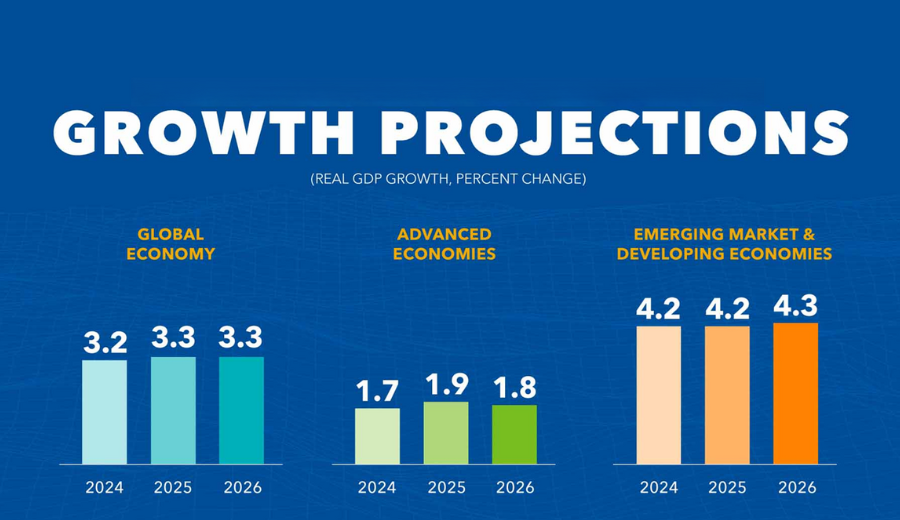As of April 9, 2025, the global economy is navigating a turbulent landscape marked by a mix of cautious optimism and uncertainty. Let’s delve into the critical elements shaping the economic outlook this year.
Growth Projections: A Slower Path Ahead
The International Monetary Fund (IMF) has recently revised its growth forecasts, projecting a global economic growth rate of 3.2% for 2025. This slowdown is primarily driven by persistent geopolitical tensions and evolving trade dynamics. While growth remains positive, experts indicate that investors and businesses should prepare for potential headwinds that could challenge this forecast.
Intensifying Trade Tensions: U.S.-China Relations
In a significant development, the U.S. administration has announced an aggressive increase in tariffs on Chinese imports, raising tariffs by 50%. This escalation brings the total tariffs on Chinese goods to over 115%, unless China retracts its own 34% retaliatory tariffs on American products. These actions amplify existing trade frictions between the two largest economies in the world, creating ripples throughout global markets and supply chains. Economists are closely monitoring the situation, as the potential for further conflict could lead to increased market volatility and impact economic growth projections.
Oil Prices: Navigating Uncertainty
In the energy sector, Goldman Sachs has issued forecasts that signal potential fluctuations in crude oil prices, specifically for Brent and WTI benchmarks. The bank’s analysis indicates that various economic scenarios—ranging from geopolitical instabilities to changes in consumption patterns—could significantly impact oil prices throughout the year. Investors and stakeholders in energy markets should stay vigilant, as these price movements can have cascading effects on inflation and overall economic stability.
A Cautiously Optimistic Outlook
Together, these factors paint a picture of a cautiously optimistic yet uncertain economic atmosphere for 2025. While growth is forecasted to continue, the ramifications of trade tensions and oil price volatility could influence both investment strategies and consumer behavior in the months to come. Stakeholders are advised to stay informed and adaptable in this ever-changing global economic landscape.
















